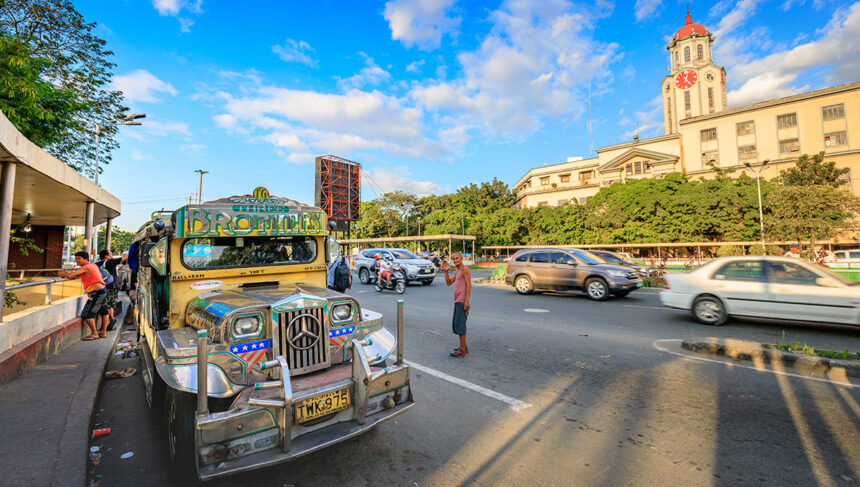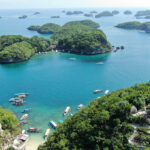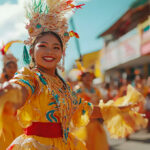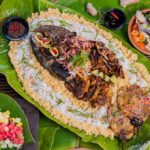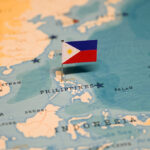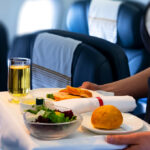Every journey through the Philippines is not just a trip, but a window into real, everyday life. It is woven into the bright fabric of daily experiences, especially during Philippines holidays. Discover the heart of this archipelago’s unique local transportation in the Philippines, which offers a plethora of alternatives for connecting you with stunning landscapes and a kind, inviting culture. From iconic, art-filled rides to nimble island hoppers, your journey through the Philippines begins the moment you board.
Why Go Local? The Benefits of Authentic Philippine Travel
Cost-Effectiveness
Going local with your travel in the Philippines saves you a lot of money. Public transportation is much cheaper than renting a private car or hiring a tour guide.
This is especially valuable for long-term travelers and backpackers exploring multiple islands.
- Jeepneys and Buses: You can travel for a lot less by taking local vehicles instead of private ones. You’ll get there slower, no doubt, but the cost difference is huge – perfect if you’re watching your spending.
- Tricycles: Got a short distance to cover? Tricycles are your go-to! These motorcycles with sidecars are everywhere and won’t break the bank. You can often get one for an entire day to tour an island, and it’s much more affordable than hiring a private car and driver.
- Ferries and Bancas: For traveling between islands, you’ll mainly use local ferries and bancas (boats with outriggers). These are much cheaper than renting a private boat or flying. You can pick from slow, inexpensive cargo ships to quicker, comfy boats with air conditioning.
Booking in advance or during off-peak times can further reduce these already low costs.
Cultural Immersion
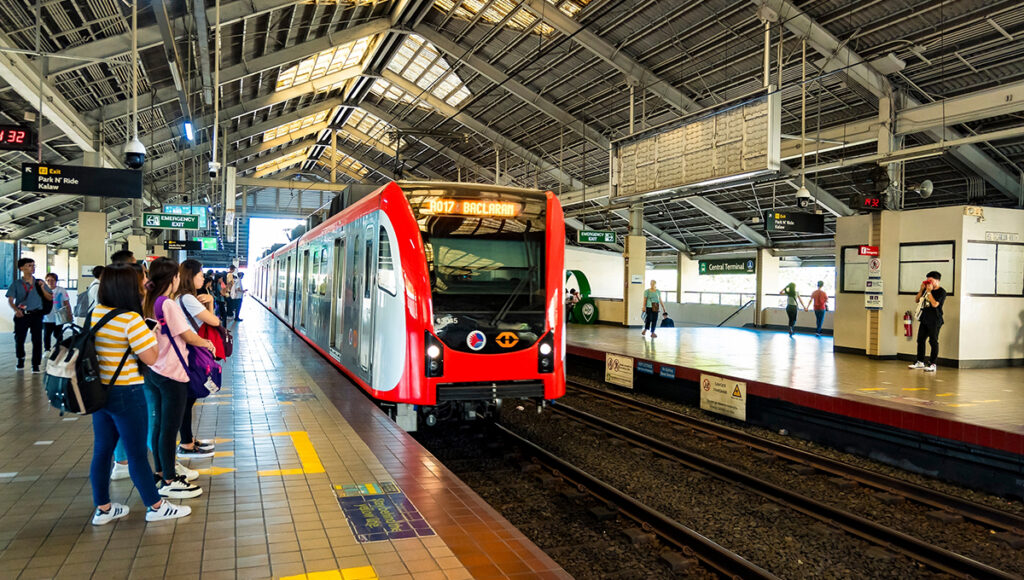
Taking public transportation in the Philippines like a jeepney or a local bus throws you right into the middle of how people live in the Philippines. A private car simply won’t give you that same deep cultural experience.
- Direct Interaction: Riding with locals means you’ll witness their everyday activities and have plenty of chances to strike up a conversation. It’s a true way to understand their culture, traditions, and what they believe in.
- Local Perspective: Traveling like a local means you’ll learn everyday phrases, discover eateries only locals know, and understand their customs. It’s how you really see the Philippines from the inside. For many travelers, these true experiences with people become the most treasured part of their travels.
- Hidden Gems: Want to know what’s truly local? Locals are your greatest hope for discovering unique activities that are not listed in tourist guides. It’s how you discover hidden beaches, bustling markets, and exciting local parties that aren’t listed in the guidebooks.
Local tour guides and drivers often double as cultural ambassadors, sharing folk stories, tips, and language insights.
Flexibility & Accessibility
Choosing local transport in the Philippines means you’ll have more flexibility. It lets you explore areas off the usual tourist path.
- Navigating Local Terrain: Jeepneys and tricycles are designed to navigate narrow streets, unpaved roads, and the unique infrastructure of Philippine towns and cities. They can take you further into the countryside and to pretty places that big private vehicles might miss.
- Island Hopping: When you’re ready to jump between the Philippines’ countless islands, bancas are your best friend. These little boats are super for island adventures, leading you to untouched coves and cool places to snorkel that larger, private yachts might ignore due to their price or difficulty in getting close.
- Spontaneous Journeys: Local transport is so common and easy to find, you can just decide to go somewhere new whenever you feel like it. A jeepney or tricycle will probably be right there to take you!
This spontaneity is part of what makes travel in the Philippines feel free-flowing and adventurous.
Environmental Impact
Choosing local transit has both a beneficial environmental impact and personal benefits.
- Public transportation in the Philippines, such as jeepneys or buses, has a far lower carbon footprint than driving a car. With fewer vehicles required to transport more people, we collectively consume less fuel and emit fewer pollutants per person.
- Public transit may significantly improve traffic in Philippine cities. Fewer automobiles on the road equals less congestion, which contributes to cleaner air and a more pleasant urban experience for both inhabitants and visitors.
Supporting public transport also contributes to community-driven economies and reduces reliance on imported fuel.
The Unstoppable Jeepney: King of the Road
The jeepney is perhaps the best-known symbol of Philippine public transport. These extended vehicles, which are made from surplus US military jeeps from WWII, are known for their extravagant, often eccentric, ornamentation and gleaming chrome trim. These vehicles, which are the primary mode of public transport in the Philippines, are central to Filipino popular culture.
They also serve as a creative canvas for local artists, reflecting cultural pride and regional identity.
How to Ride:
Look for jeepney routes either painted on the vehicle’s side or shown on a front window signboard. To ride, simply flag one down from the side of the road. Fares are regulated and fluctuate by distance; you pay the driver (or another passenger, who will pass it on). To get off, tap the roof or yell “Para po!” (Please stop!).
The Versatile Tricycle: Your Neighborhood Shuttle
Comprising a motorcycle and an attached sidecar, the tricycle is a ubiquitous presence throughout the Philippines. Its ingenious build means it’s perfect for moving people in places where bigger vehicles just won’t work. Local preferences and varying road conditions across the Philippines lead to distinct regional tricycle designs. City tricycles are often built with advanced, enclosed sidecars. These offer a comfier and weather-protected journey. Provincial tricycles often have open, traditional designs. They’ve been modified to fit larger passengers or various goods. They are a useful mode of transportation in the Philippines for short excursions and navigating the sometimes narrow and twisty streets of suburbs and small towns. Travel experts recommend tricycles for flexible, low-cost travel, especially when exploring local markets and beach towns. For official transport regulations and vehicle classifications, the Philippine Land Transportation Office (LTO) provides comprehensive guidelines.
How to Ride:
- Tricycles, like taxis, are widely available and can be summoned from almost anywhere.
- Give a hand signal to the driver as they approach.
- To avoid paying more than you expected, agree on the fare with the driver before leaving.
- How to ride a tricycle depends on your priorities.
- Enjoy a quicker and more comfortable ride by taking a special tricycle trip. It’s just for you, straight to your destination, in exchange for a premium fare.
- If you’re looking to save money, a shared ride is your best bet. You’ll join other passengers traveling the same general route, making it a more economical choice per person.
- To avoid any confusion, agree on the price with your driver beforehand.
Buses: Connecting Cities and Provinces
In the Philippines, buses are the most popular way to get around from one city or region to another. As a key mode of transportation in the Philippines, buses are classified into four types: provincial buses, which connect provinces; city buses, which go within cities; air-conditioned buses, which are more comfortable but more expensive; and ordinary buses, which do not have air conditioning and are the cheapest.
They serve as the backbone of inter-city travel and are a top choice among both locals and experienced travelers.
How to Ride:
- If you’re taking a bus to another province, head to the bus terminal.
- Tickets can be booked online for some major bus lines.
- Walk-in ticket purchases are available at the terminal.
- City buses operate on fixed routes and stops, similar to international bus systems.
- Long-distance journeys require advance planning, especially during peak seasons.
FX / Shared Vans: Faster and More Comfortable Commutes
These are a popular choice among working professionals and travelers looking for a middle ground between comfort and affordability.
Description: FX vans are like comfy, air-conditioned minivans that follow set paths. They’re quicker than jeepneys because they make fewer stops. They are a popular choice for commuters seeking a faster and air-conditioned alternative.
How to Ride:
- FX vans usually have designated terminals or pick-up points in urban centers and transport hubs.
- Fares are generally fixed for specific routes.
- Passengers wait for the van to fill up before it departs.
Habal-Habal (Motorcycle Taxis): The Adventurous Option
Habal-habal are the indispensable, on-demand motorcycles that serve as your personal two-wheeled transport for those difficult-to-reach areas and dangerous inclines. These are simple motorbike trips for hire. They’re well-known for their ability to transport large numbers of passengers in unexpected ways, though the lack of helmets on riders is frequently noted.
Travelers seeking highland experiences, such as those in Mindanao or the Cordilleras, often rely on habal-habal for last-mile access.
How to Ride:
- Habal-habal drivers can be hailed directly from the road.
- Since there are no fixed rates, fare bargaining is essential.
- Always negotiate the fee and destination before the ride begins.
- The overcrowding of passengers is a huge safety risk.
- The lack of protective equipment heightens the safety concerns.
Trains (LRT/MRT): Metro Manila’s Lifeline
Escaping Metro Manila’s notorious traffic is made possible by its two primary urban rail systems: the LRT and MRT. These elevated lines offer a crucial, swift, and seamless journey for those navigating long distances within the bustling city.
These systems are ideal for first-time visitors wanting to avoid road congestion while staying in the capital.
How to Ride:
- Passengers can buy individual trip tickets.
- You can use stored value cards, including the Beep Card, for extra convenience.
- Navigating the stations is straightforward, thanks to clear labeling.
- Trains run at regular intervals, especially during peak hours.
Boats & Ferries: Island Hopping Essentials
The vast expanse of the Philippines’ over 7,000 islands necessitates the continuous and critical operation of boats and ferries for inter-island movement. Depending on your itinerary, you can choose from high-speed “fast crafts” for efficiency, spacious “RORO” (Roll-on/Roll-off) ferries if you’re bringing a vehicle, or charming “pump boats” for local transfers and island-hopping experiences.
Island experts suggest trying pump boats for more intimate, scenic views — perfect for visiting secluded beaches and snorkeling areas.
How to Ride:
- Tickets can be purchased at either the ferry or the port terminal.
- It is recommended that you book ahead of time, especially for popular routes and during peak seasons.
- Purchase your tickets at the ferry or port terminal. Before leaving, go over your schedule briefly.
- Prepare for potential travel delays or cancellations due to inclement weather.
- Ensure all passengers have access to life jackets.
Kalesa (Horse-drawn Carriage): A Glimpse into the Past
Local Transportation in the Philippines offers more than just utility – it’s an invitation to time travel. Experiencing the kalesa isn’t merely about transportation in the Philippines; it’s about connecting with a living piece of Philippine heritage. These quaint vehicles, previously used for daily transportation during the Spanish colonial era, now provide visitors with a nostalgic peek into the past. You’ll primarily find them in designated historical and tourist areas, with Intramuros in Manila being the most famous spot, alongside other picturesque heritage towns like Vigan. Forget about using them for your daily commute; the kalesa is all about leisure, sightseeing, and soaking in the old-world charm.
Cultural historians often highlight kalesas as must-ride experiences for heritage tourism in the Philippines.
How to Ride:
- Near popular tourist areas featuring kalesas, cocheros (kalesa drivers) are typically stationed.
- To ride, you approach a cochero and negotiate the tour route and fare directly.
- Rides are typically offered as fixed-duration tours of historical areas, not as point-to-point transportation.
- It is recommended to agree on the price and itinerary beforehand to avoid misunderstandings.
Essential Tips for Navigating Local Transportation in the Philippines

- Small Change, Big Convenience: Always Keep Cash on Hand.
- It is best to negotiate the fare for tricycles and habal-habal services. Knowing the current rates ahead of time will help to ensure a fair transaction.
- Stay alert, protect your items, and avoid solo late-night travel in new areas.
- Need to know how to get somewhere? Check Google Maps. Want a ride? Use Grab to find and book one, and compare prices.
- Luggage Limits: How much can you bring on each mode of transportation?
- Learn the basic phrase, “Magkano?” (How much?) “Saan po?” (Where to go?) “Para po!” (STOP!).
- Respect the local customs by giving way and being kind.
A little respect goes a long way — a warm “Salamat po” (Thank you) always leaves a smile.
The heart of your Philippine journey’s discovery often beats strongest on the road less ordinary, a path that might just be a jeepney ride away. It’s more than just a ride from one beautiful place to another; it’s an invitation to become part of the dynamic heart of Filipino society. Every journey tells a tale, each payment builds a bond, and every shared experience creates a lasting memory. For more tips on how to explore the Philippines on a budget, check out World Pinoy Flights for travel inspiration, affordable routes, and island-hopping ideas tailored to your style.
Backed by local knowledge and cultural richness, these transportation methods offer more than mobility—they connect you with real life in the Philippines.
So, go ahead, dive in, and let the Philippines move you, one authentic ride at a time. What local transport are you most excited to try first?


